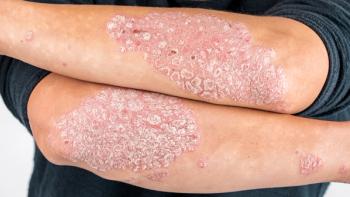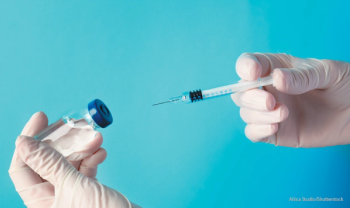
- MHE May 2021
- Volume 31
- Issue 5
New Hemophilia Treatments Look to Cut Number of Infusions
Longer half-lives mean less frequent administration and improved quality of life.
A potential new generation of treatments for hemophilia may build on the progress made in treating the condition, which affects approximately 400 infants born each year, by reducing the burden that treatment can have on patients’ quality of life.
Hemophilia is a rare, genetic disorder in which a person’s blood does not clot normally, resulting in spontaneous bleeding internally and excessive bleeding after injury or surgery. The condition is more common in males than females, affecting 1 in 5,000 male births.
The condition may result in chronic joint disease from repeated bleeding into the joints, neurological damage and damage to other organ systems. Hemophilia can also lead to quality-of-life issues, including psychological and social issues.
The goal of treatment typically focuses on preventing bleeding. For patients with hemophilia A, the most common type of hemophilia, the inability of the blood to clot is caused by a shortage of a protein called factor VIII. Treatments focus on factor VIII replacement, which helps the blood clot. Thanks to the class of treatment, people with hemophilia A now live nearly as long as people without the condition.
However, there is still room for improvement in hemophilia treatment because of the relatively short half-life — a measurement of how long a drug will work based on the time it takes for the amount of the drug in your body to be reduced by half — of traditional factor VIII treatments. The shorter a drug’s half-life, the more often it needs to be administered.
With traditional factor VIII replacement options, the half-life life ranges from 15 to 19 hours, so patients need to get treatment about every other day. Factor VIII is administered intravenously, so frequent administration has a major effect on the quality of life of patients.
One of the goals of the newer hemophilia A treatments is to lengthen the time between infusions. The newer treatments include:
- Biogen’s Eloctate, or antihemophilic factor (recombinant) Fc fusion protein, which in 2014 became the first approved treatment of its kind for adults and children with hemophilia A.
- Novo Nordisk’s Esperoct, or antihemophilic factor (recombinant) glycopegylated-exei, which the FDA approved in 2019 for adults and children with hemophilia A.
- Bayer’s Jivi, or antihemophilic factor (recombinant) PEGylated-
auci, which was approved in 2018. Long-term results from a phase 3 trial of the treatment were recently released, confirming that the treatment safely prevents bleeds in young boys (under 12 years old).
An even newer generation of factor VIII replacements is aimed at further cutting the number of infusions needed. These treatments have a half-life up to four times that of traditional replacement therapies, so patients only need to be treated once a week.
Sanofi is currently recruiting patients for a phase 3 trial of its experimental treatment, provisionally named BIVV001, which is a fusion of several blood-clotting proteins and a protein polymer, XTEN, that extends the half-lives of therapeutic proteins. Although it remains to be confirmed how well the treatment works, positive results from a phase 1-2a open-label trial were reported in the New England of Journal of Medicine last year. The small, industry-sponsored study enrolled 16 men with severe hemophilia A who were treated with a single dose of BIVV001.
Other factor VIII products in development include CSL626 from CSL Behring, a biotech company headquartered in suburban Philadelphia, and OCTA101 from Octapharma, a Swiss company that focuses on products made from human plasma.
Jaime Rosenberg is a freelance medical writer based in Jersey City, New Jersey.
Articles in this issue
over 4 years ago
3 Takeaways About Managing the Cost of MSover 4 years ago
The Rise in Formulary Exclusionsover 4 years ago
Digital Behavioral Health is Growing Hand Over Fistover 4 years ago
Patient-Centered Medical Homes: Were They Built to Last?over 4 years ago
Playing it Safe and Secure Amidst Online Vaccine Securityover 4 years ago
How the New Price Transparency Rules are Affecting Stakeholdersover 4 years ago
Pandemic May Lead to Further Provider Consolidationover 4 years ago
Herd Immunity May Depend on Persuading “Conspiracy Believers”over 4 years ago
It Will Not Be Your Pre-pandemic OfficeNewsletter
Get the latest industry news, event updates, and more from Managed healthcare Executive.

















































